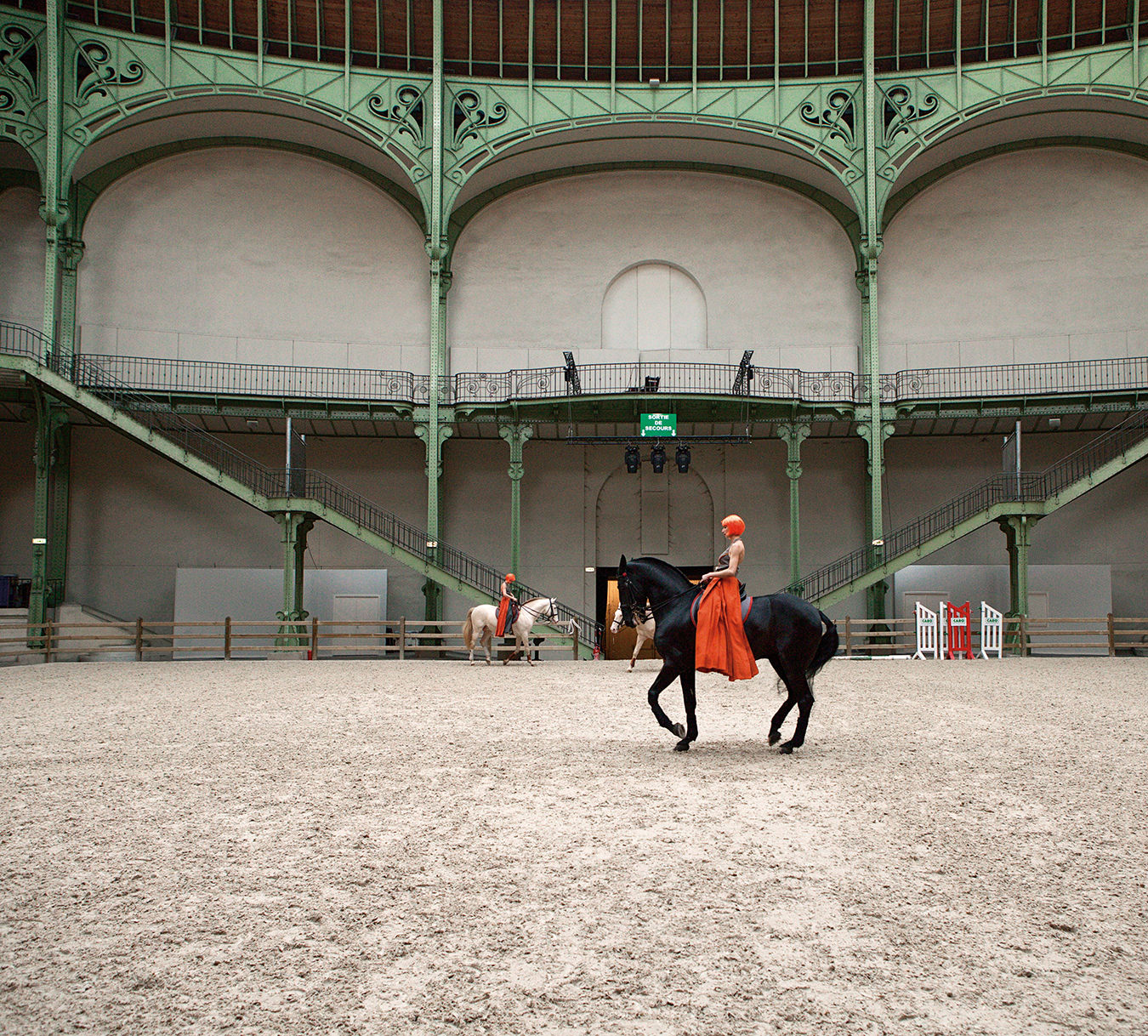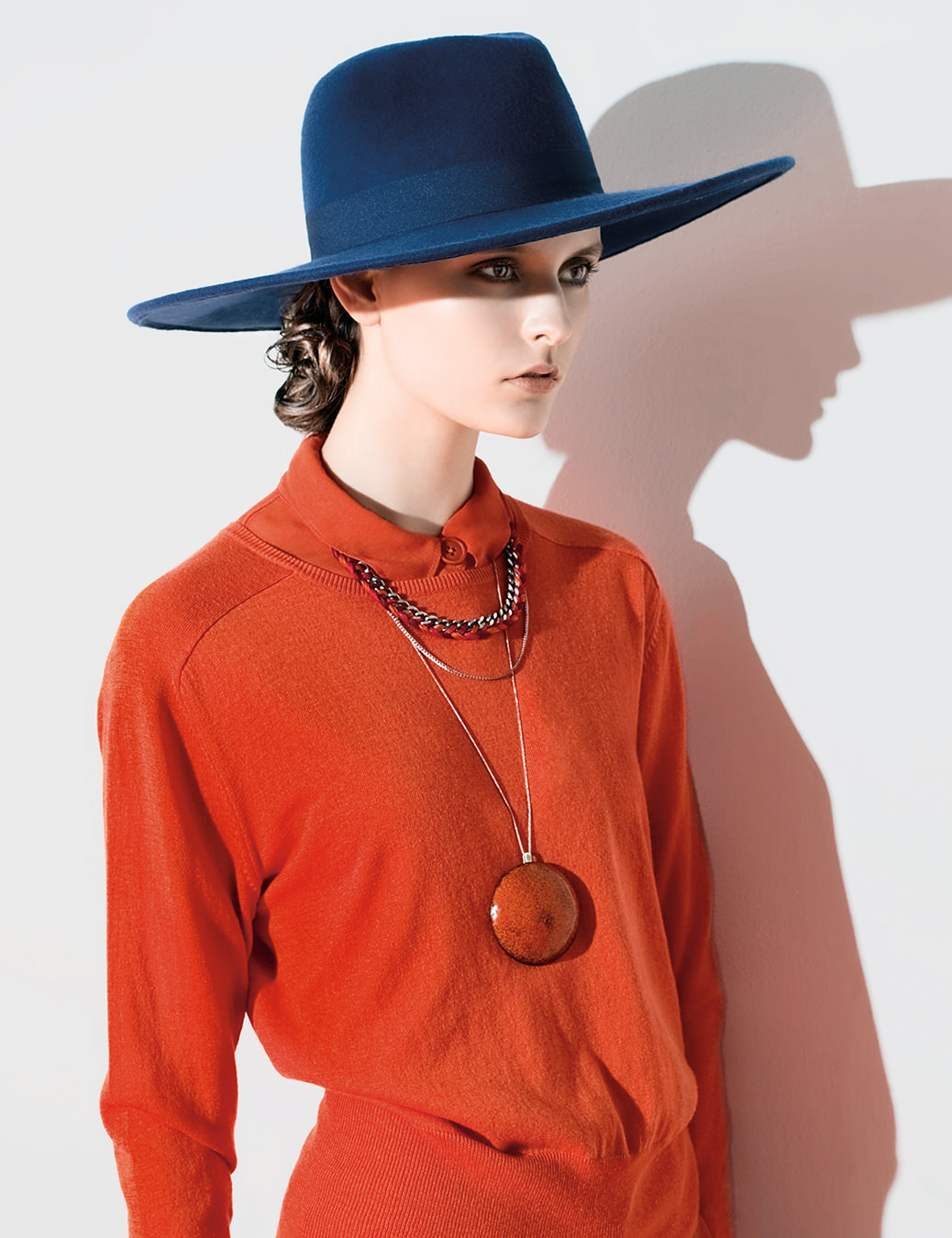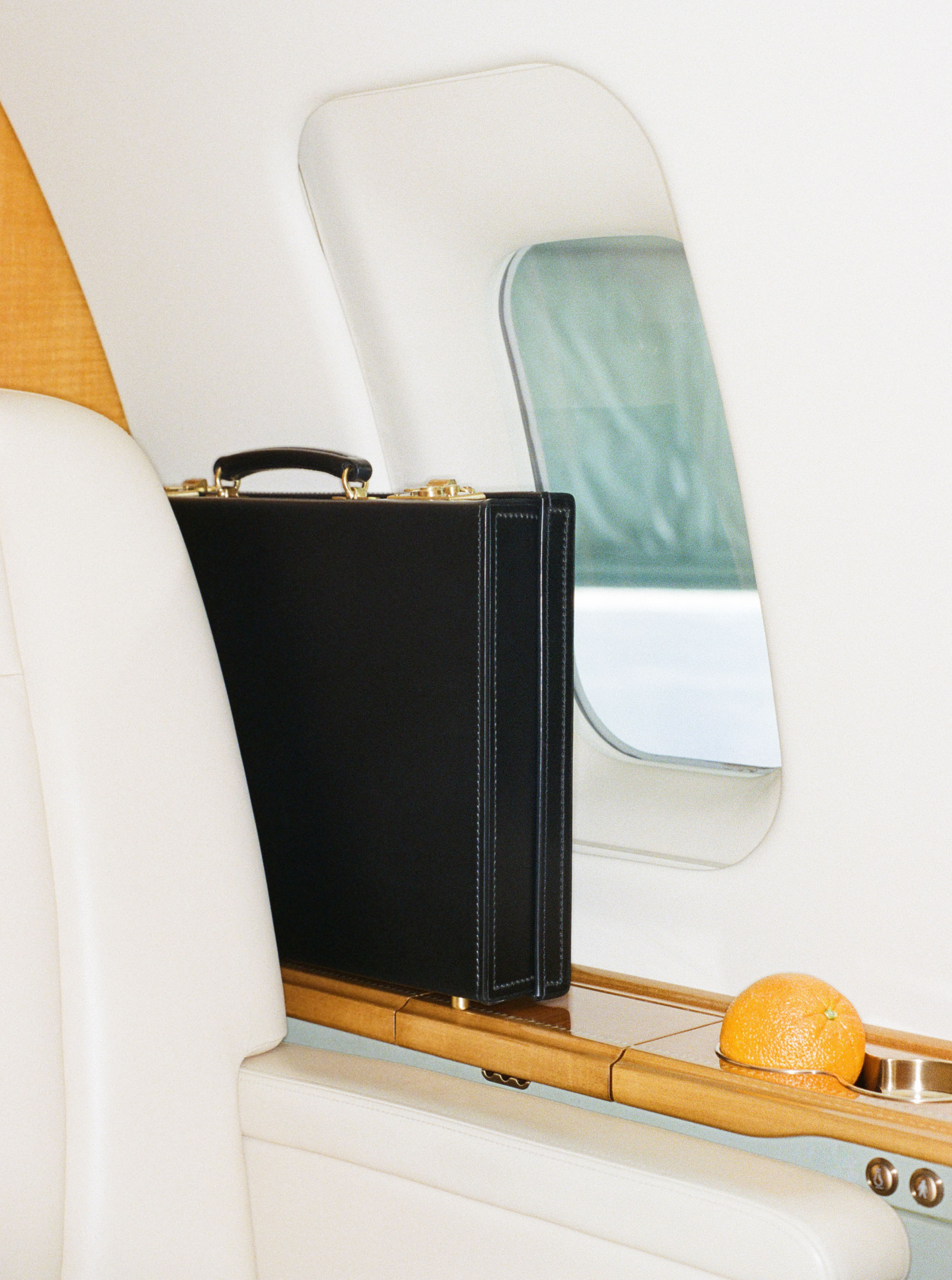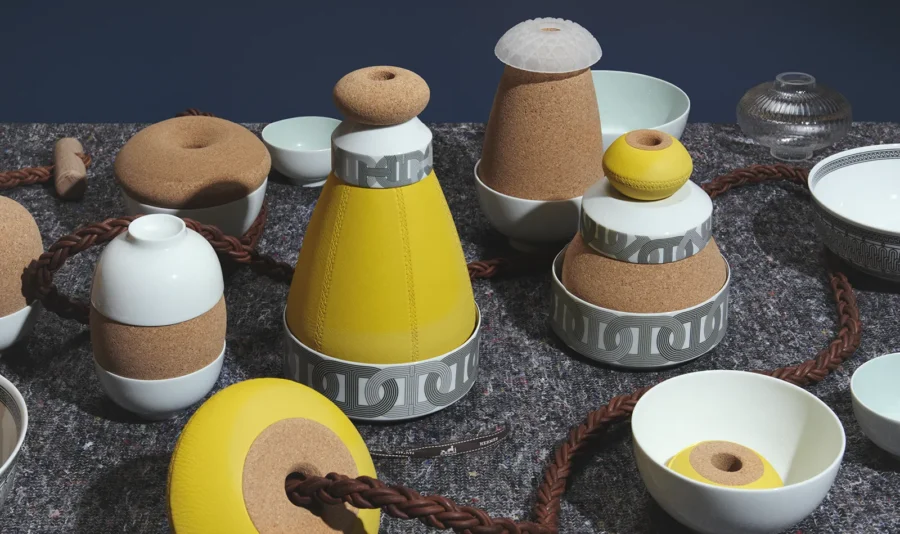
Hermès Reimagines the Leftovers of Luxury With Petit h
What began as an experimental studio for upcycling remnants has become a symbol of environmentally conscious creativity in fashion. Under the creative direction of Godefroy de Virieu, Petit h challenges how we define scraps, beauty, and value.
In the world of Hermès, where a Birkin handbag can take days to craft, and a silk scarf is treated like fine art, nothing is left to chance—or to waste. But what becomes of the leather offcuts, the unused silk, the overlooked bits of porcelain and crystal that don’t make it into the final creation? Enter Petit h (pronounced “petit ash”), the maison’s quietly radical atelier where remnants are resurrected. In the Pantin neighbourhood of Paris, master artisans and artists use castoff materials for one-of-a-kind objects that are equal parts whimsical, functional, and unmistakably Hermès.
Stepping into the atelier is like entering a hybrid craft laboratory and artist’s studio. This is no traditional workshop. The sunlit industrial space is lined with high shelves of treasures: jewel-toned silk scarves, offcuts of leather, porcelain shards, hardware, ribbon, and buttons. Every surface seems alive with possibility. There’s no assembly line and no strict blueprint. Instead, it’s a place where materials take the lead and ideas emerge from what remains. Here, artisans and artists work side by side, engaging in a kind of creative improvisation. A porcelain fragment might become a drawer pull; a scarf may reappear as the canopy of a mobile. “With creativity, we can reinvent things,” says Godefroy de Virieu, creative director of Petit h, who describes the initiative as “creation in reverse” where “ideas are materials.” The atmosphere is both playful and meticulous—a blend of high craftsmanship and childlike curiosity.
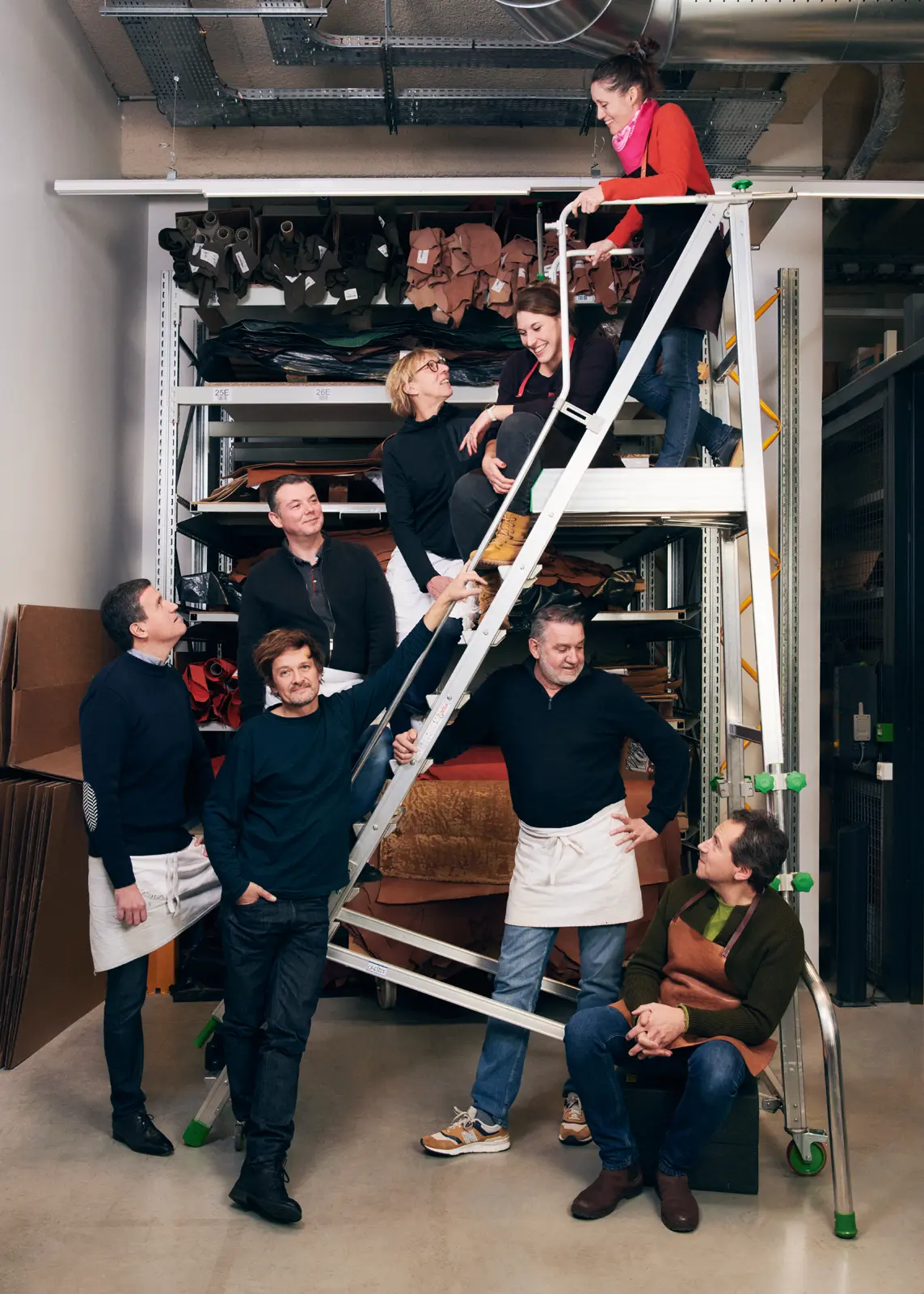
Artisans from the Petit h workshop with Godefroy de Virieu, creative director of Petit h.
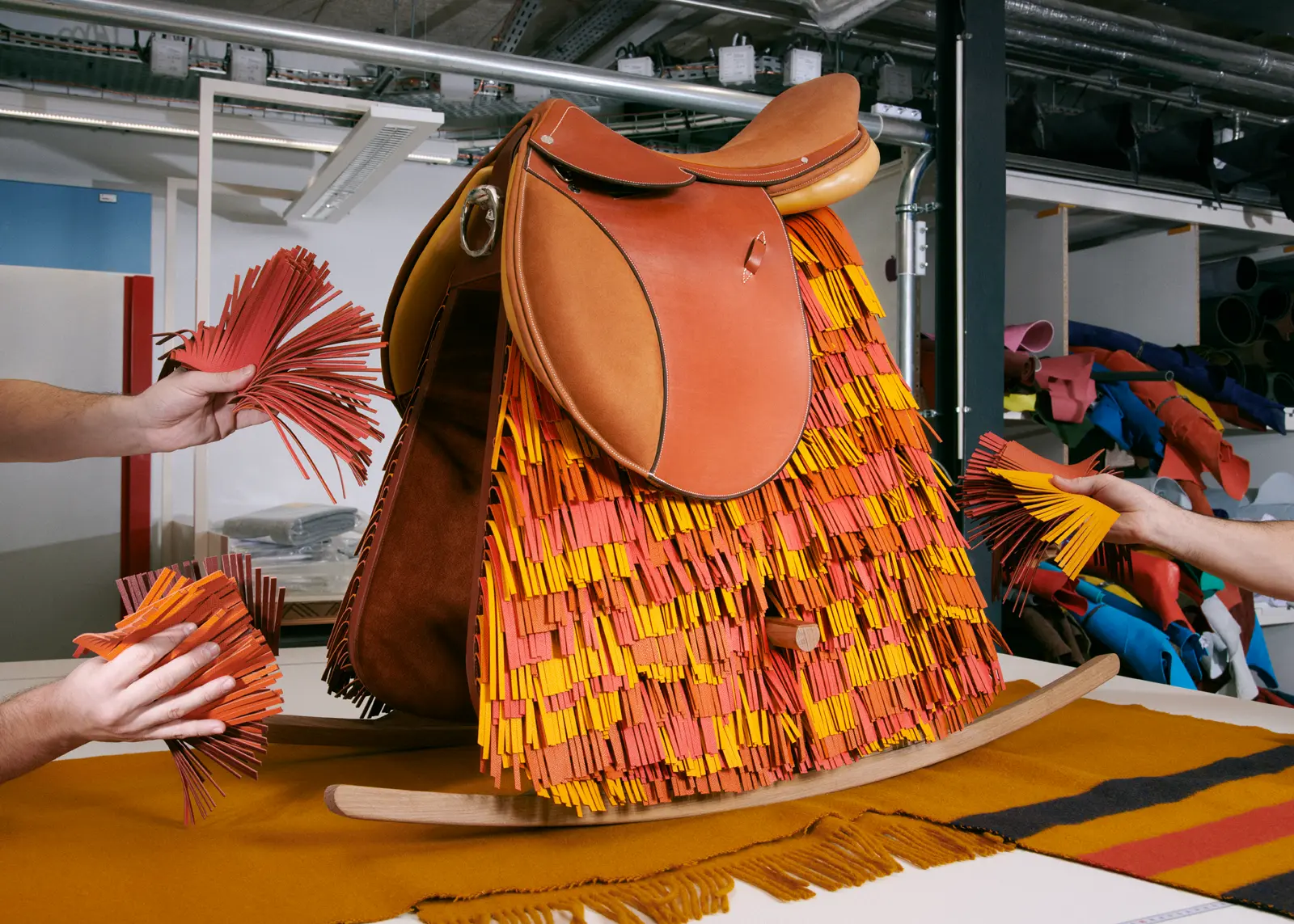
Petit h objects are equal parts whimsical, functional, and unmistakably Hermès. Here, a rocking saddle with leather fringes.
Very much the part of modern luxury mashup—de Virieu embodies the quiet confidence of someone unconcerned with appearances yet deeply attuned to aesthetics. On any given day, you might find him in an Hermès-orange ball cap, Blundstone boots, and the kind of days-old stubble that signals more time spent in the workshop than in front of the mirror. It’s not a studied look but rather the uniform of a someone more preoccupied with making than being seen. This unassuming presence belies a sharp creative intelligence and a deep respect for craft. In many ways, he reflects the spirit of Petit h: raw, considered, and unconstrained by convention.
___
Inside the atelier in the Pantin neighbourhood of Paris, artisans work side by side, engaging in a kind of creative improvisation. “With creativity, we can reinvent things,” says Godefroy de Virieu, creative director of Petit h, who describes the Hermès initiative as “creation in reverse” where “ideas are materials.”
After graduating from the Parisian design school École nationale supérieure de creation industrielle (ENSCI-Les Ateliers), de Virieu “never worked for a company. I tried to invent things and sell them,” the 55-year-old creative says. He joined Petit h as a collaborator in its early days, working alongside founder Pascale Mussard. (Mussard, a sixth-generation member of the Hermès family, founded Petit h in 2010 as a self-reflective response to the problem of waste in the luxury industry.) “The discourse of sustainability is something that has become mainstream,” de Virieu says, “but Petit h was pretty much one of the pioneers when it comes to sustainability and the reuse and upcycling of materials.” In 2018, he officially succeeded Mussard as creative director. The first objet he created for Petit h was a swing—made of wood, leather, two equestrian stirrups, and rope. It was an unexpected debut, but that’s precisely what made it powerful—an object designed for joy, freedom, and imagination.
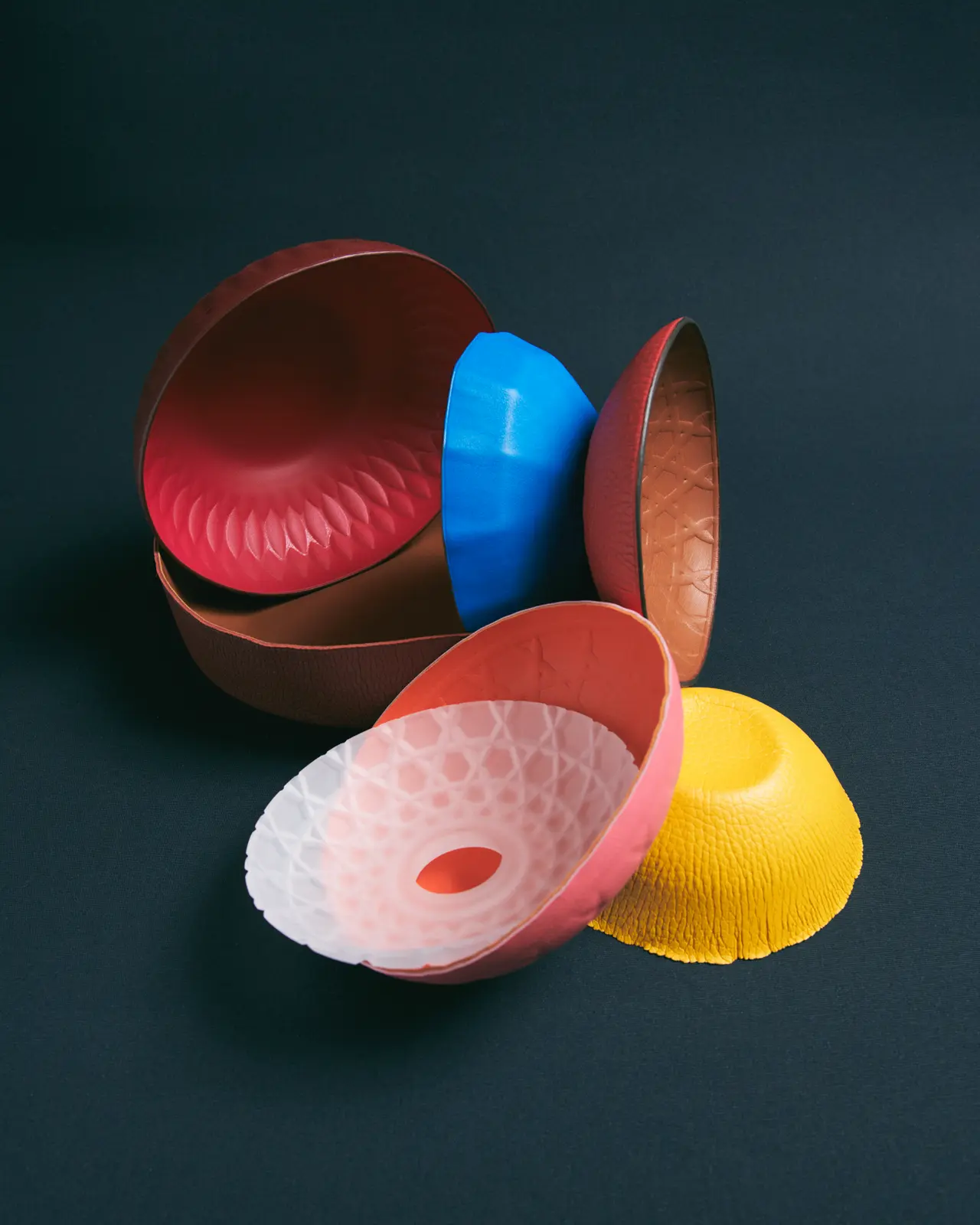
Hermès reimagines the leftovers of luxury with Petit h. Here, bowls in moulded leather and cut crystal.
What de Virieu brings to Petit h is not only a deep respect for materials and artisanal know-how, but also a commitment to creative freedom and sustainability. Rather than asserting a signature style, he sees his role as that of a facilitator, encouraging dialogue between craftspeople and pushing the boundaries of what these remnants can become. “Design has become a star system,” he says of the industry, and “what I try to do with the team is to consider where we came from, to protect the planet, to take care of the material and belongings with as little impact as we can.” His leadership has helped shape Petit h into a true creative laboratory within the house of Hermès.
While Petit h has faced questions about its role in the broader sustainability conversation, there is no doubt that it is a bold and imaginative rethinking of what sustainable luxury can look like. Critics may point to the exclusivity or novelty of the pieces, but therein lies part of their value: telling new stories through existing ones. The aesthetic diversity of the products is a reflection of its guiding philosophy: that materials lead the way, and designers follow. More importantly, it reminds us that sustainability is not just about reduction, but also imagination.
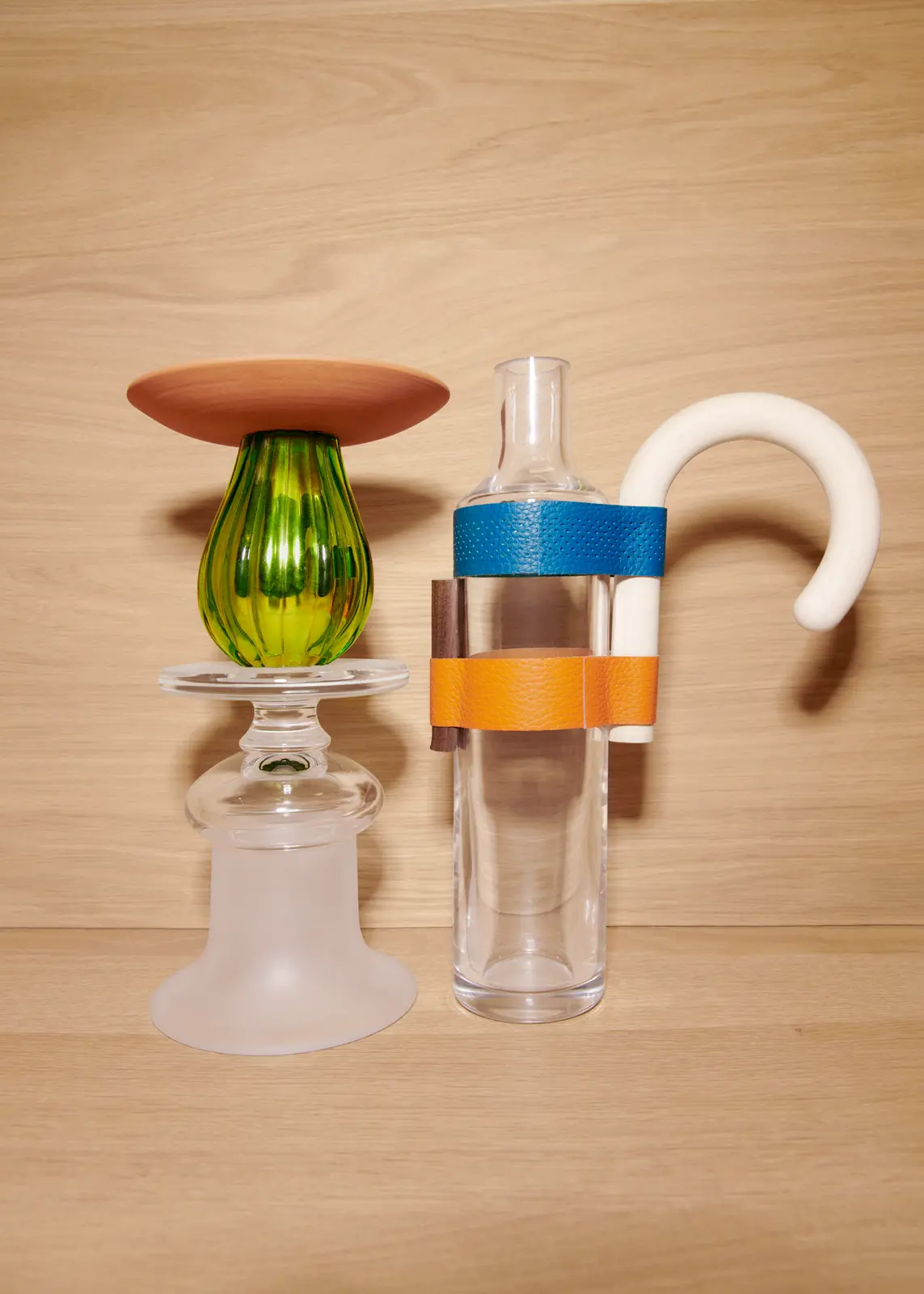
A crystal incense holder (left) and bottle with umbrella handle taped with leather ribbon (right).
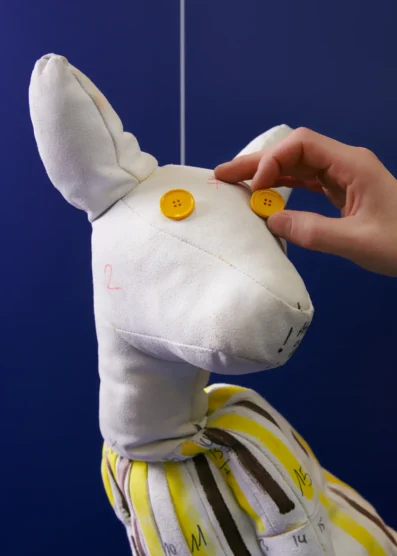
Kangaroo stuffed animal.
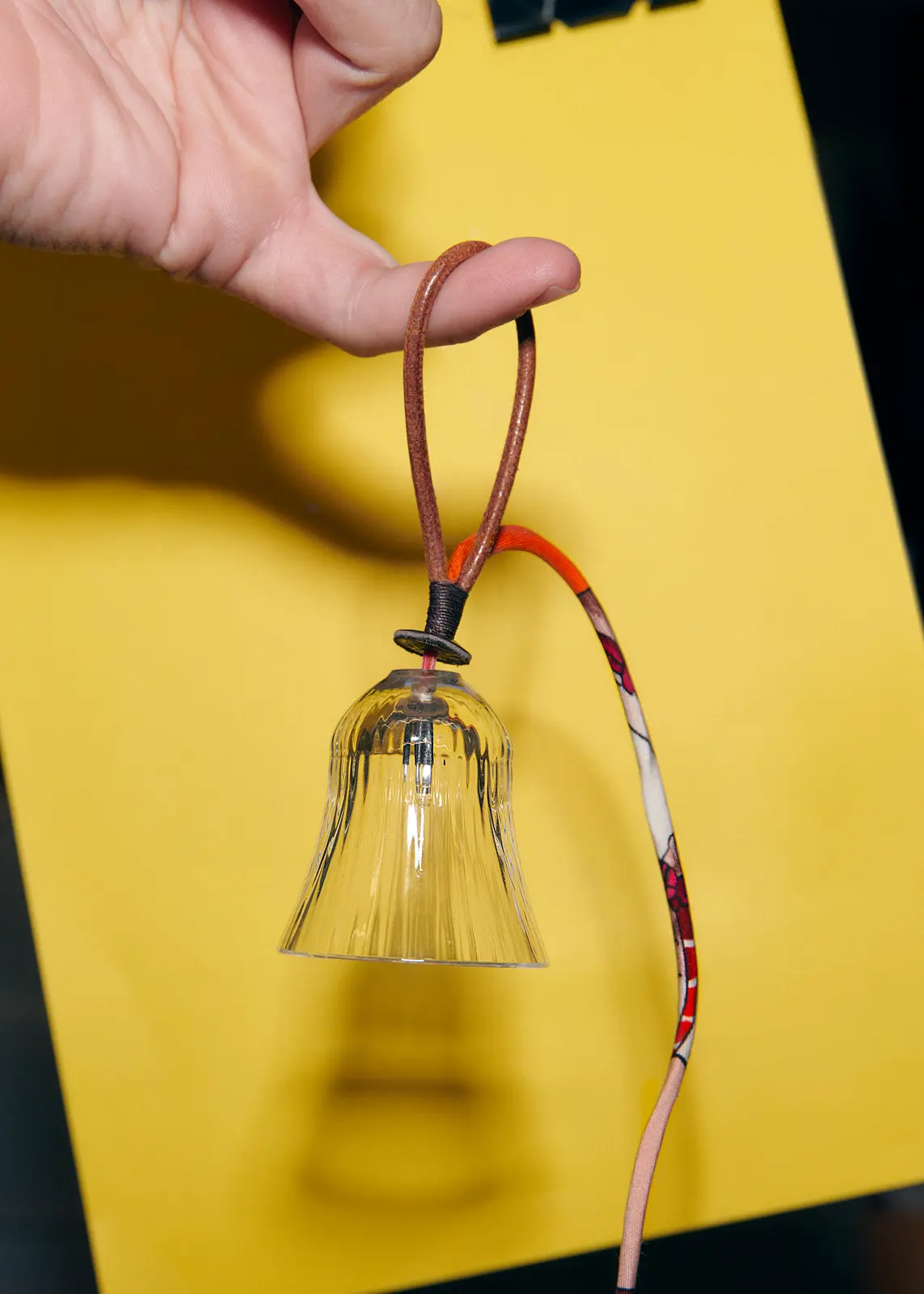
Portable lamp in crystal, leather, and silk.
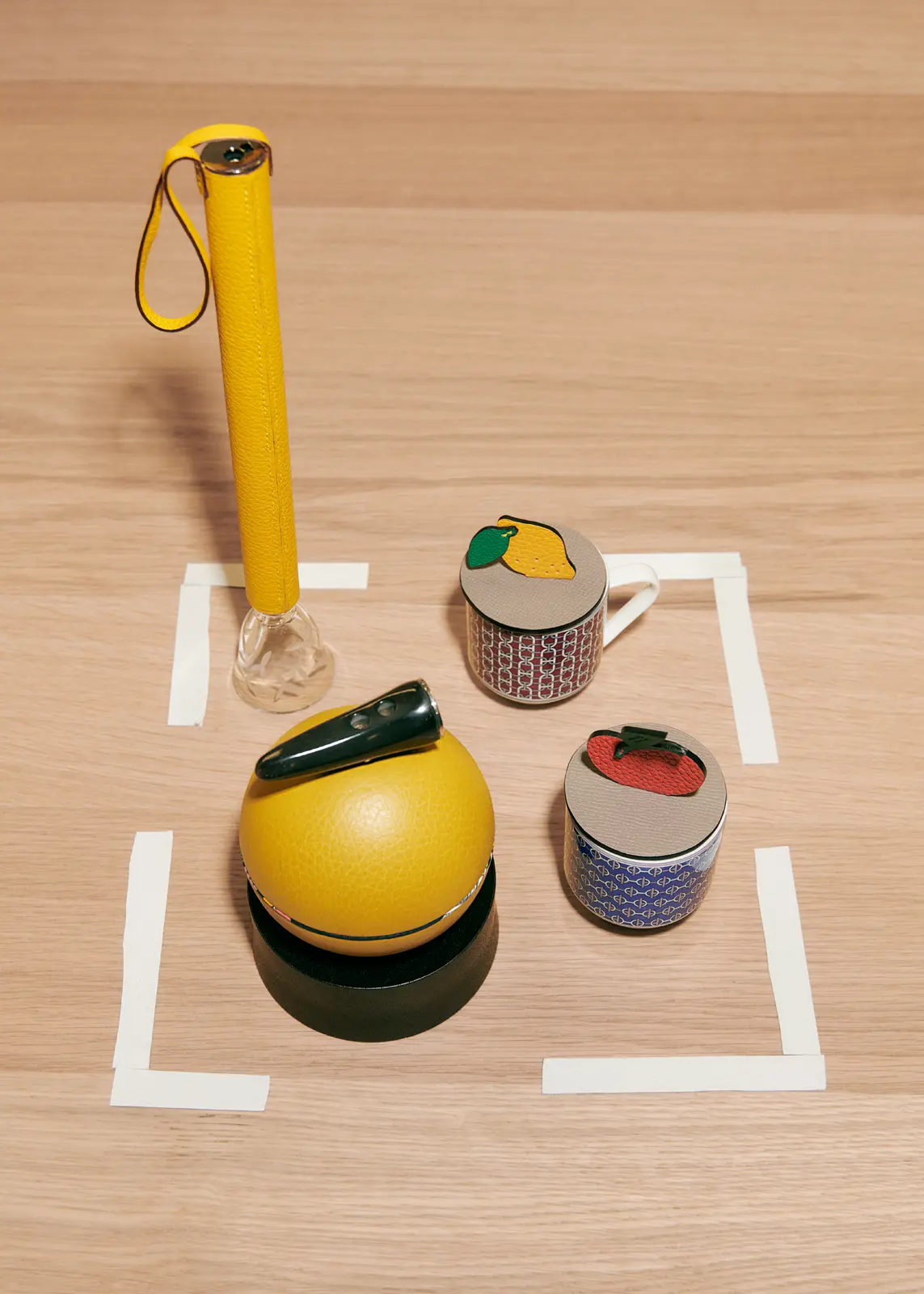
Cups in porcelain and leather fruits, and music box in leather and key with ready-to-wear button.
A selection of Petit h items are always available at the Hermès boutique on Rue de Sèvres in Paris—a location that serves not just as a point of sale but also as a kind of gallery space. Among the standout pieces there are the now-iconic salt shaker crafted from crystal, leather, and a single button from Hermès ready-to-wear; leather charms shaped like animals, hearts, or abstract forms that hang from silk twill cord; and even an electric guitar built around the internal frame of an equestrian saddle. The Hermès Petit h collection is also presented in pop-up installations that travel from city to city and blend scenography, storytelling, and a rotating selection of one-of-a-kind pieces. The only Canadian stop of this nomadic showcase is happening now, at the Hermès boutique in Vancouver from November 4 through 29. As with Petit h, no two of these nomadic workshops are the same, and each new destination represents an opportunity to reimagine what luxury can be. “We don’t work in seasons or on a collection,” de Virieu notes. “This is our freedom. Our luxury is we have time to do things.”
As the fashion world increasingly grapples with resource scarcity, environmental impact, and shifting consumer expectations, Petit h stands out as a quietly influential experiment focused on low volume, high creativity, respect for material, and the centring of craft. Petit h pushes the boundaries of what luxury objects can be—not just handbags or scarves, but also sculptural hybrids that tell stories of material life and artisan ingenuity.


